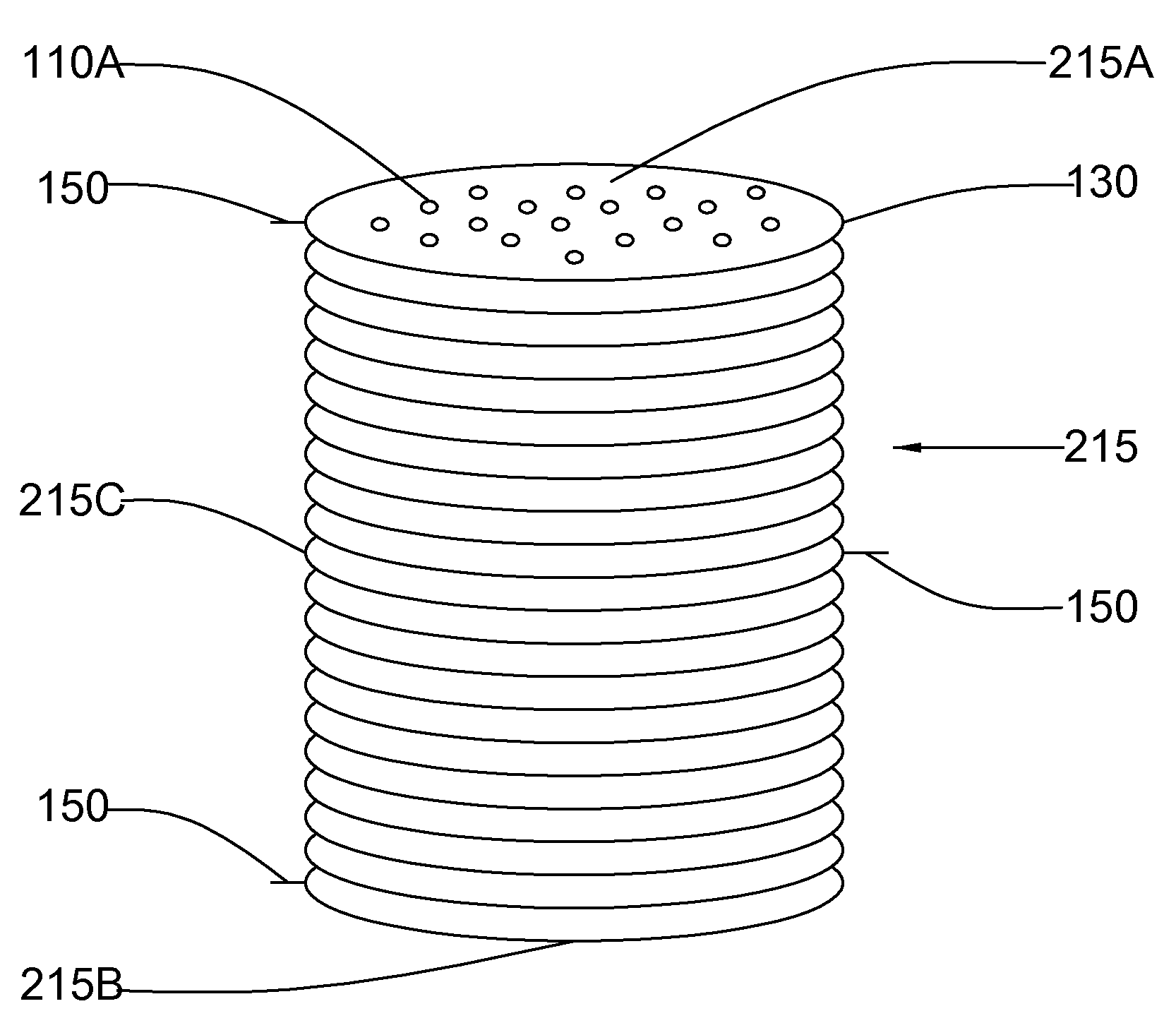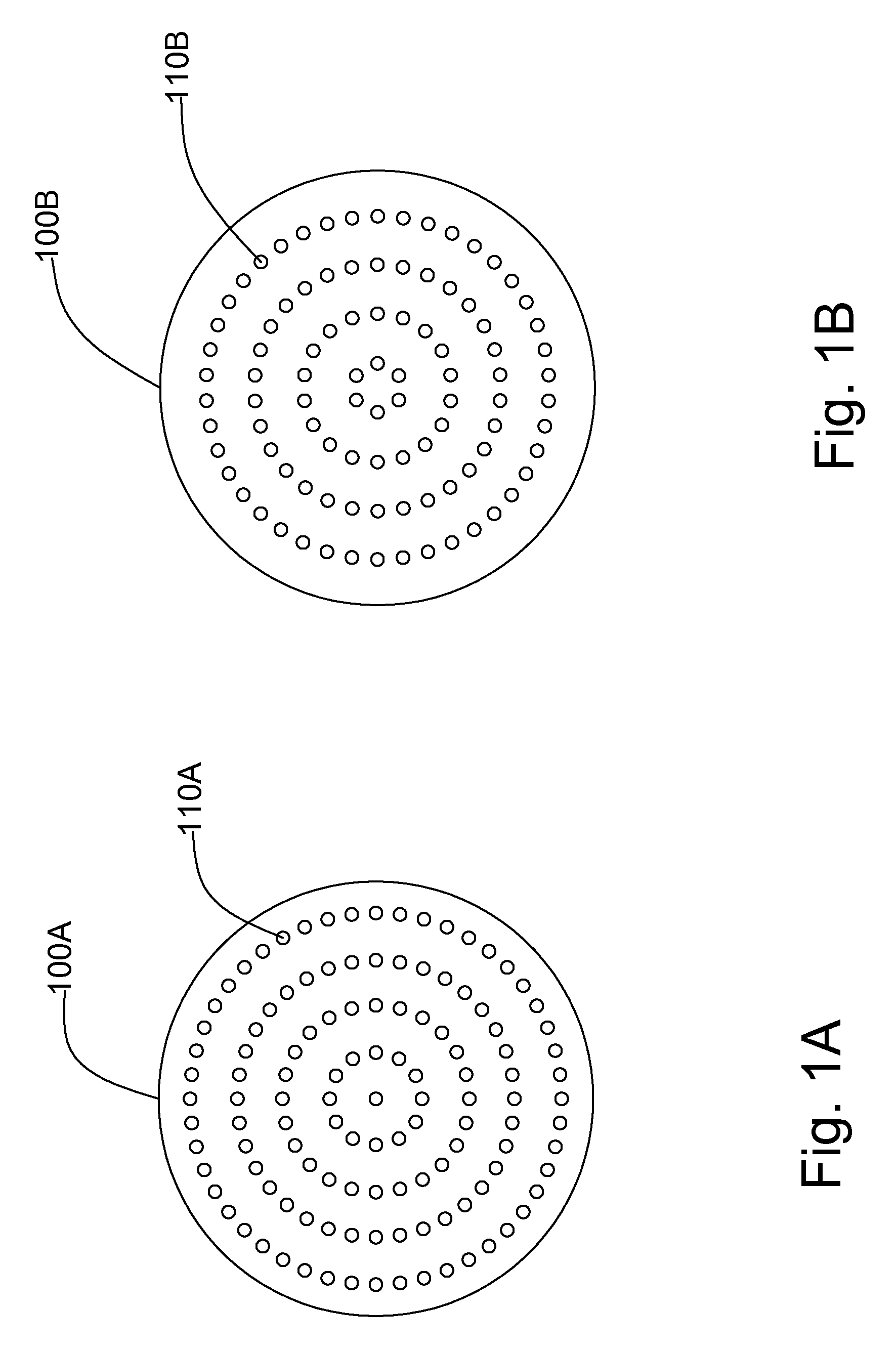Capacitive Deionization Using Hybrid Polar Electrodes
a hybrid polar electrode and capacitive deionization technology, applied in the field of cell structure, can solve the problems of low water-recovery rate, disadvantages of ro, and the most difficult to meet the standard for purification of water resources, so as to shorten the circulation time of cdi operation and reduce energy cost
- Summary
- Abstract
- Description
- Claims
- Application Information
AI Technical Summary
Benefits of technology
Problems solved by technology
Method used
Image
Examples
example 1
[0049]A FTC unit is made by stacking 21 pieces of activated carbon-coated Ti plates, and the stack is placed in a plastic case to form an independent FTC module 200. Each plate has a diameter of 10 cm with perforated holes in a pattern as shown either in FIG. 1A or in FIG. 1B, and thus the active area of one side of an electrode is about 66.7 cm2. Since the FTC module 200 has 20 electrodes, the total effective electrode area of one FTC unit is 1,334 cm2. Five of the foregoing FTC modules are connected in series for water to flow continuously through the tandem array, but each FTC module 200 will receive a charging current independently through their two electrical leads respectively welded to the top and bottom electrodes of each FTC stack. Thus, each FTC unit is a series array of 19 pieces of bipolar electrodes sandwiched by a pair of positive and negative electrodes. For charging the five FTC units in parallel, the 10 electrical leads are first divided into two groups, wherein eac...
example 2
[0052]A stand alone FTC module is made as that shown in FIG. 2, wherein 21 pieces of electrodes are stacked vertically. Three electrodes, namely, the first, the eleventh and the twenty-first, are selected as the monopolar electrodes by connecting two electrical leads that are attached to the end electrodes to the positive pole of a power supply, and the lead of middle electrode to the negative pole. Between each pair of positive and negative electrodes, there are nine bipolar electrodes to connect eleven electrodes in series. All electrodes are made of activated carbon-coated stainless steel plates having a diameter of 10 cm with perforated holes in a pattern as shown in either FIG. 1A or FIG. 1B. Each electrode has an effective area of 267 cm2 on one side, thus, the total effective areas of the FTC module containing 20 cells is 5,340 cm2. With a power setting of 30 V×10 A from a power system containing a DC power supply and two 15 V×40 F S / C sets applied to the FTC module, a 10-lit...
PUM
| Property | Measurement | Unit |
|---|---|---|
| travel length | aaaaa | aaaaa |
| operation voltage | aaaaa | aaaaa |
| operation voltage | aaaaa | aaaaa |
Abstract
Description
Claims
Application Information
 Login to View More
Login to View More - R&D
- Intellectual Property
- Life Sciences
- Materials
- Tech Scout
- Unparalleled Data Quality
- Higher Quality Content
- 60% Fewer Hallucinations
Browse by: Latest US Patents, China's latest patents, Technical Efficacy Thesaurus, Application Domain, Technology Topic, Popular Technical Reports.
© 2025 PatSnap. All rights reserved.Legal|Privacy policy|Modern Slavery Act Transparency Statement|Sitemap|About US| Contact US: help@patsnap.com



